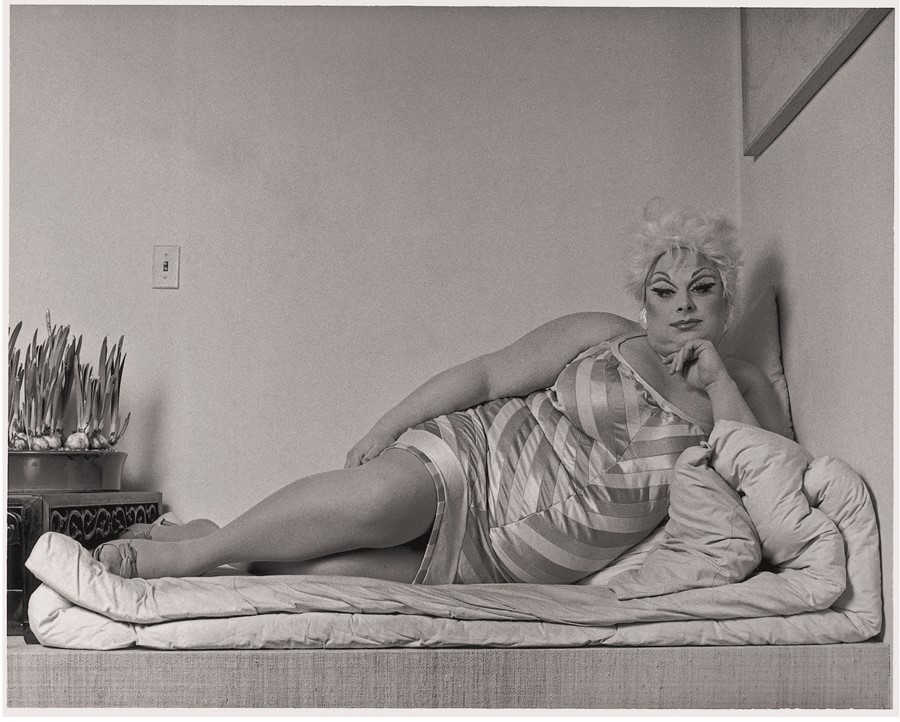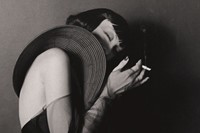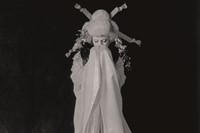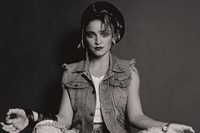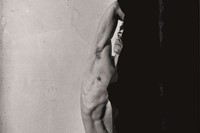Marcus Leatherdale arrived in New York in 1978 ready to “make his mark” on the city – he did so by creating stunning portraits of the era’s underground luminaries, from Leigh Bowery and Cookie Mueller to Andy Warhol and Tina Chow
Creative revolution has long been a by-product of life in the shadows. It’s seen every decade: the rebellious underground, who exist on the margins of society, so often become those who disrupt and revolutionise the system. 1980s New York and its teeming creative bohemia is one such example – artists, musicians, photographers and nightlife impresarios who lived their lives in opposition to conservative American values, in doing so spurring a cultural revolution which would alter New York’s identity forever.
The late 1970s and early 1980s were a time when misfits from across America – and indeed, the world – travelled to the city for enlightenment. The best happenings were in the underground scenes which spread across Manhattan: on the Upper East Side, luminaries Andy Warhol and Jean-Michel Basquiat rattled the art world, while downtown fetishists, drag stars, and sex artists proudly demonstrated a new wave of sexual and queer liberation.
Somewhere in the middle was Montreal-born photographer Marcus Leatherdale, who moved to New York in 1978 from San Francisco, where he had been part of the West Coast city’s punk scene. After crashing with friend Robert Mapplethorpe until he found his own apartment, Leatherdale moved to a place on the Lower East Side where he set up a home studio that would soon be graced by artists from across the city. “It was the first time that I totally felt in the right place at the right time, where I wanted to be,” says Leatherdale. “I was determined to make my mark in New York City.”
Over the next decade, Leatherdale did just that: he produced black and white portraiture which captured the pulse of the city. Leatherdale also began a series titled Hidden Identities, in which he asked his various subjects to hide their faces, allowing their style and presence to tell their story; Debbie Harry appears draped in a see-through metal dress, performance artist Leigh Bowery is photographed naked save a beaded mask and a mirkin. These luminaries are joined by members of New York’s then it-crowd, from restaurant owner Tina Chow to drag artist Divine, model Iman, Warhol, Mapplethorpe, and many more.
Nearly 40 years later, Leatherdale’s images are a vital documentation of life in 1980s New York, and are now published in the photographer’s retrospective photo book Out Of The Shadows (1980–92) – a title which illuminates photography’s role in shedding light on hidden communities, especially those of bygone times. “I never thought of my life in New York City in the 80s as revolutionary,” Leatherdale reflects. “These images were created as a day in my life. Time seems to have focused on the nostalgia of the era – I did not realise that I was archiving a time that would be extinct in 30 years.” Here, Leatherdale recounts memories of seven of his iconic sitters.
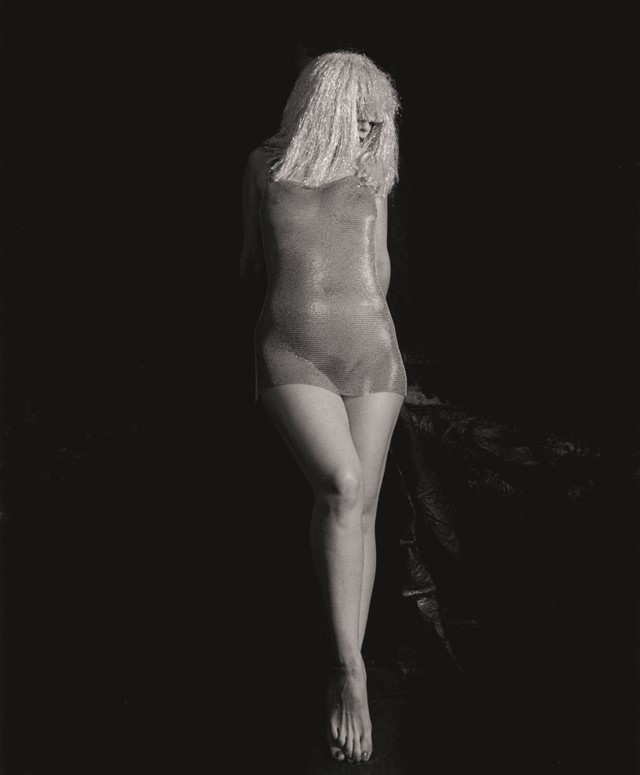
Debbie Harry
“This image of Debbie is one of the newest, made in 1992. I did this Hidden Identities series and stopped when Details magazine stopped because it was just something that I did with friends, it wasn’t like I was a commercial photographer. But people were saying, ‘why don’t you resurrect Hidden Identities and do it again?’ And I thought, ‘well, I might do a few just to see’ and Debbie was actually one of the few who resurrected it. Debbie is a friend and had no problem doing it. She’s very down to earth, so she just turned up at my door with a bag of stuff, including a silver wig and a silver dress made out of metal – I think it was done by Michael Schmidt – and we took this picture. Who would have thought a metal dress could be almost transparent? The premise of Hidden Identities is basically like, you don’t need to see who they are to get their persona or to get their star quality. Their personal style and their presence is enough to know who that person is. And I think she felt that this did it. She felt comfortable. There wasn’t a lot of premeditated thought that went into this – it was both of us getting together and this is what happened.”
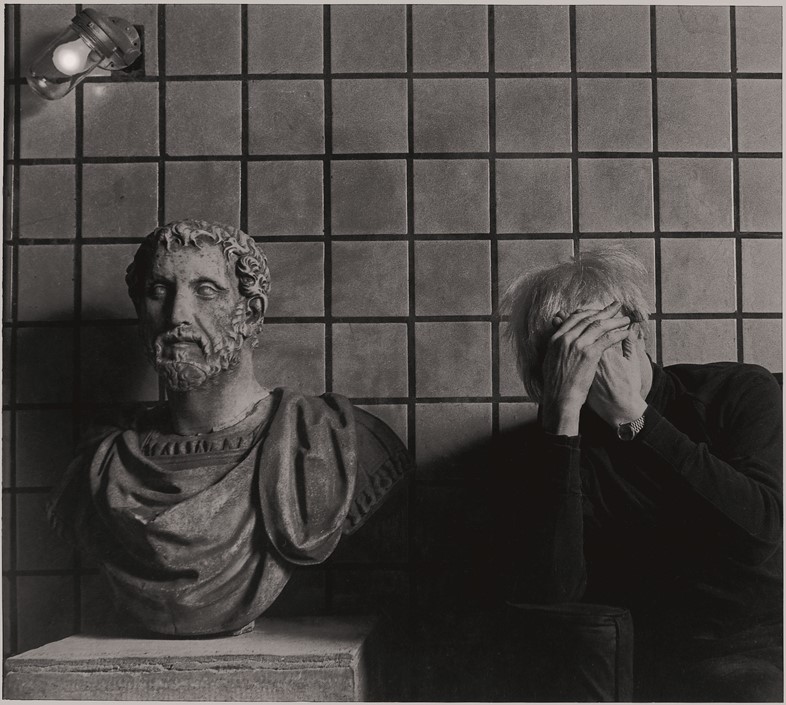
Andy Warhol
“Andy Warhol was a social friend, we never spent private time together. It would be lunch at the Factory or Studio 54 or my birthday dinner, we were always out and about town. I initially met him through Robert Mapplethorpe. I photographed Warhol for Issey Miyake in my studio and then again later at his final ex-Con Ed Factory as one of my Hidden Identities. My last memory of Andy was bittersweet. We were sharing a checker cab with Tina Chow. We had been celebrating Jerry Hall’s birthday at Mick Jagger’s townhouse. He mentioned in conversation that he was afraid of hospital, and that if he ever went in, he would not come out. Sad but true. He died of complications and Tina Chow also died of Aids. I am the last man standing from that cab ride.”
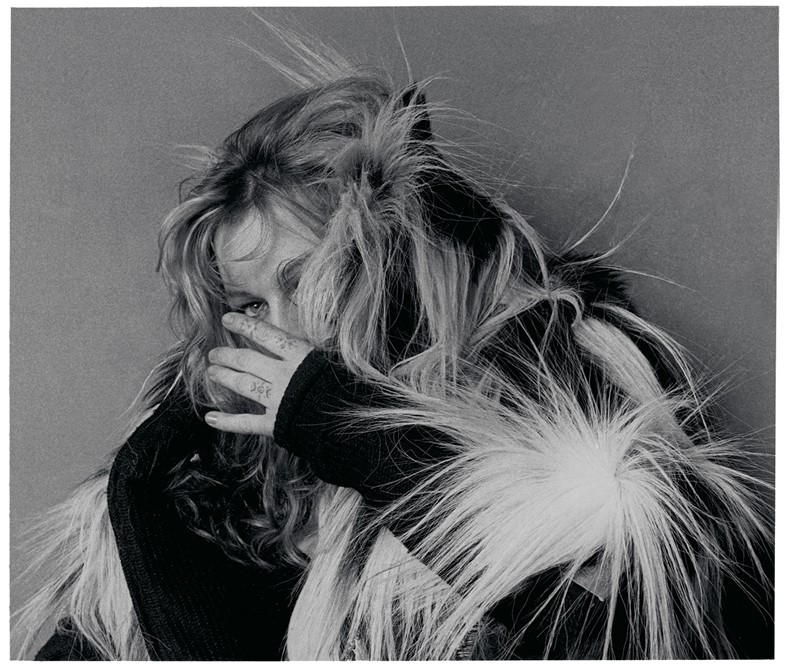
Cookie Mueller
“Cookie Mueller was a drug dealer for Mapplethorpe, and one day he said, ‘I’m going to go pick up coke, I’m going to Cookie’s’. And I thought, ‘who’s Cookie?’ So I went with him and met her and then realised ‘oh my gosh, she’s Cookie from John Waters’ stills!’ She’s very down to earth, very easygoing. We became instant friends. After that, I photographed her a few times, two of which are in the book. One was the Hidden Identities shot, the other one was her en route to Studio 54; I photographed her in my studio before we went there. Cookie was very fluid. She was she was living with a girlfriend at the time, Sharon, who was also part of the John Waters crowd.”
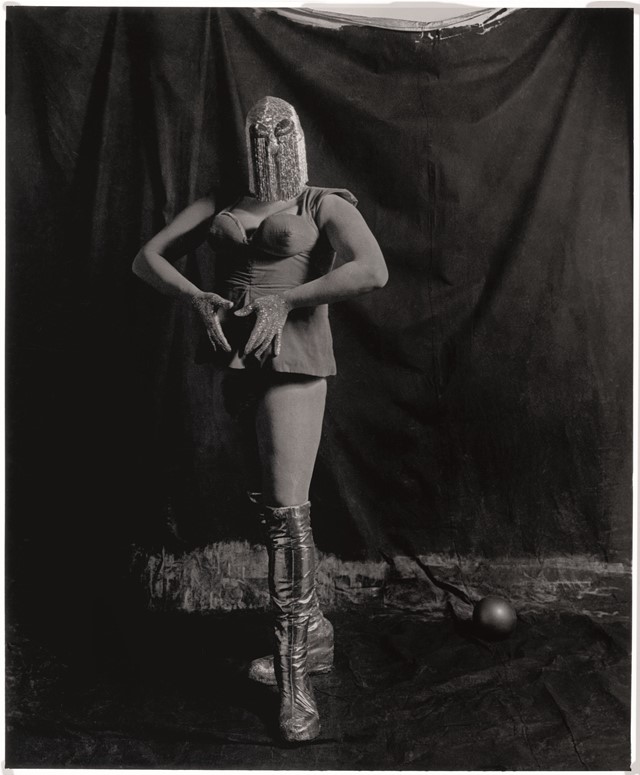
Leigh Bowery
“I met Leigh Bowery at La Prix, a club at the time and he was dressed exactly how we have him in this photograph – the beaded mask, the silver boots and of course the mirkin, which is a vaginal wig. He was stark naked except for this. I just thought he was so amazing to talk to because he talks like a proper English gentleman coming out of this huge martian creature. I just loved this dichotomy. So we teamed up the day after we met. Calling Leigh a cab during rush hour has to be one of my favourite New York moments. Cars would be swerving out of the way not to pick him up, because in platforms he was huge. He was a gentle giant. I never actually had a one-on-one with him to see his face. He was always masked.”
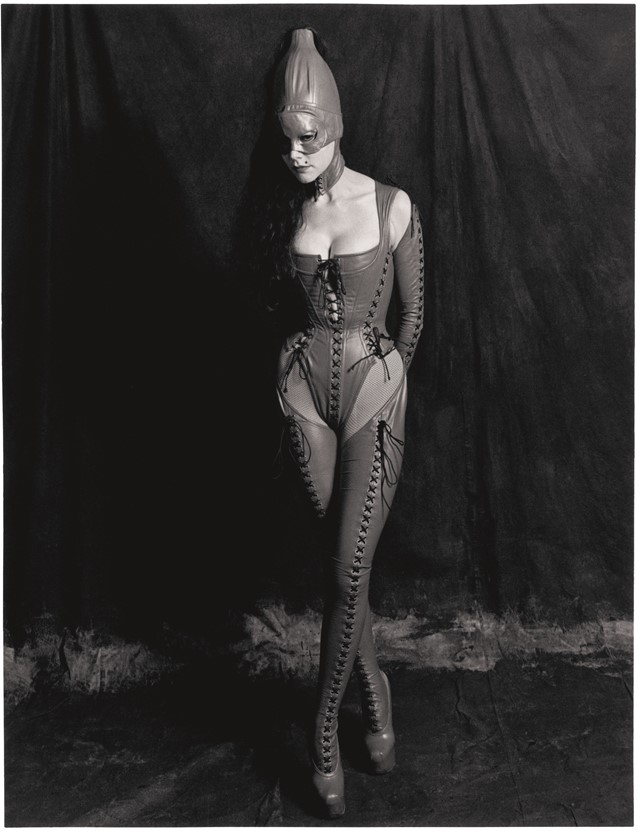
Susanne Bartsch
“When Susanne Bartsch came to shoot for Hidden Identities, she came in all red leather with Mr Pearl, who’s the infamous corset designer who did things for Thierry Mugler. Basically, anyone who wanted a couture corset went to Mr Pearl. So she turned up with him and we did that shoot. At that time she was becoming the hostess of New York in terms of nightlife, and also, she created a ton of money for its Aids benefits. So she became really central in that way as well, and she’s still doing that to this day. I met her flogging jewellery behind the counter of a jewellery store, before she became the girlfriend of Peter Gatien who owned the notorious Limelight Club. We are born exactly a year apart, we’re both Virgos.”
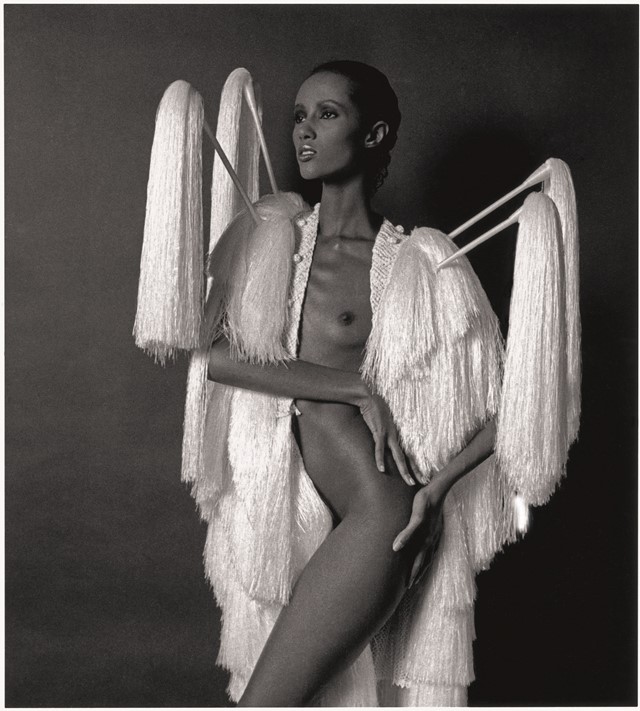
Iman
“Iman is a very dear friend of mine. I met her because Issey Miyake wanted a non-fashion photographer to photograph his book Body Works. I don’t do fashion and I never did fashion except for that. Yet funnily enough, the cover of Out of the Shadows was for him. Some of my best portraits ended up being actually commissioned for fashion, even though they weren’t fashion shoots. There was no one there but me and a rack of clothing, no make-up artist, nothing. Everybody did it themselves. I was able to pick models for this so Iman was my top choice. We became very close friends from this picture on. We saw each other a fair amount outside of work, before she met David Bowie. People don’t realise how intelligent Iman is. She speaks seven languages, at one point she was an interpreter at the UN. She went to high school in Egypt, her father was a diplomat. In 1983, Iman had a major car accident and smashed her whole face. She was able to have her face reconstructed, but during that period her face was a mess but she did not let this deter her – she didn’t hide from it, she just was just as proud. That shows her character.”
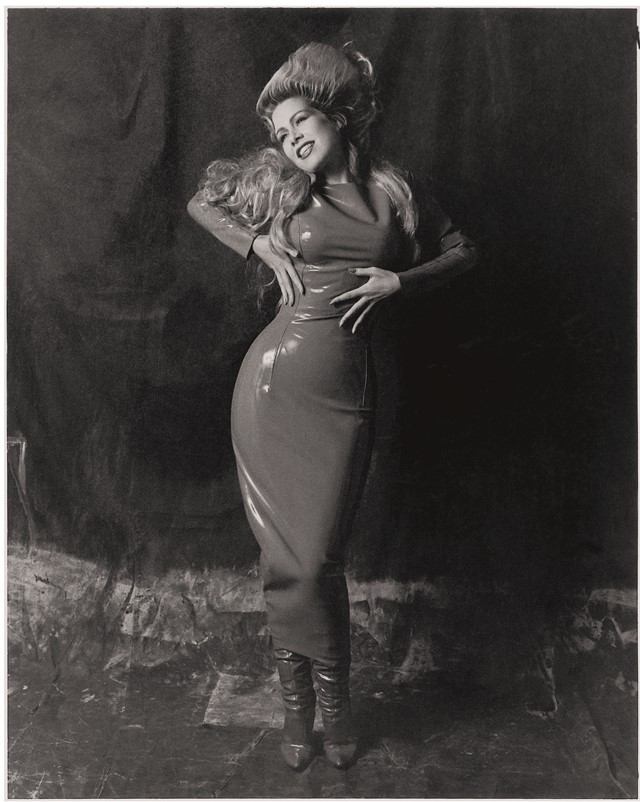
Dianne Brill
“Dianne was the most congenial girl in New York City. She was called the ‘queen of the night’ by the New York Times and rightfully so – she’d walk into a room and it would just light up. If she paid attention to you, she made your evening and you thought you were the most important person. The only other person that could do that is Andy Warhol. She was she was like a cowgirl, she had kind of like a hip, new wave Dolly Parton to her. She was selling secondhand clothing, and then she got involved with Rudolf Pieper who was the club owner for Danceteria. So she had a platform to be the hostess and that’s how we met. She later on became a model for Thierry Mugler for many years.”
Out of the Shadows by Marcus Leatherdale is available now, published by ACC Art Books.
